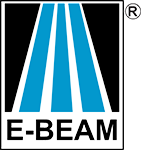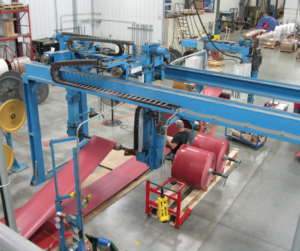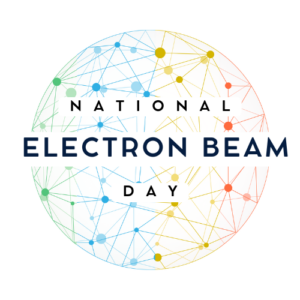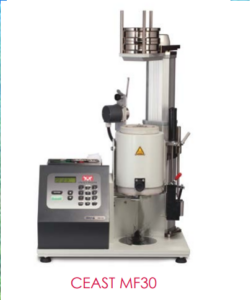
Electron beam processing is a technology with a broad range of commercial applications. It provides users with an effective and efficient means to bring about useful changes in the properties and performance of polymers and other materials. The technology is also widely used for the sterilization of medical devices, pharmaceuticals, and cosmetics.
History
Much of the pioneering work in the field of electron beam technology was done in the 1930s by Dr. Arthur Charlesby. In the 1950s, Ethicon, a division of Johnson & Johnson, first commercialized e-beam sterilization. Ethicon found their sutures were more pliable and stronger when sterilized via electron beam versus heat or steam sterilization. Sequoia Wire Company was first to utilize e-beam crosslinking of wire insulation jacketing. Over the last 60 years, e-beam applications have steadily expanded to include polymer modification, composite curing, semiconductor and gemstone enhancements, food processing, and many others.
How it works
Electron beams are particle accelerators. In this case, the particles being accelerated are electrons and the beam generated is the equivalent of beta radiation. An electron beam’s size and power are best described by the voltage and current. The voltage is the force that accelerates the electrons. The current, measured in amps, is the rate of flow of electrons. A highly reliable accelerator design used around the world and at E-BEAM Services is the Dynamitron®. This is a linear accelerator and it works on the same principle as a cathode ray tube (CRT) in a television set. Electrons are generated by heating a filament. A voltage gradient draws the electrons away from the filament and accelerates them through a vacuum tube. The resultant beam can then be scanned by means of an electromagnet to produce a “curtain” of accelerated electrons.
The CRT inside a TV set operates at 20 kilovolts (keV), whereas modern industrial accelerators can operate up to 5,000 kilovolts (5 MeV) or more. Electrons accelerated to 5 MeV are traveling at approximately 99.6% of the speed of light when they exit the beam tube. In a television set, the beam current is a few microamps, whereas an industrial beam’s current is 10,000 times higher. Since electrons have mass, their penetration into materials is limited by their energy and the density of the target material. The high energy and current of industrial electron beams allow efficient processing of products by producing rapid reactions between the electrons and irradiated products.
Application of the radiation
Using a horizontal conveyor system, the product is passed through the curtain of electrons. Products can be processed on carts in cases or loose in bulk. Products such as cable, tubing, and sheet are processed reel-to-reel using a different kind of conveyor system. In penetrating these objects the electrons can create beneficial chemical and structural changes.
For example, accelerated electrons kill bacteria and mold, making e-beam ideally suited for sterilization and bioburden reduction applications. In the case of polymers and plastics, e-beam crosslinking improves a variety of properties, including high and low-temperature performance, tensile and impact strength, creep resistance, durability, chemical resistance, environmental stress crack resistance (ESCR), barrier properties, rheological improvements, and others.
Contract processing vs. owning a beam
The use of an e-beam contract service provider is usually the most cost-effective way to manufacture products via irradiation. The purchase, installation, and operation of all the components of an e-beam system is a complex and capital intensive undertaking. Furthermore, the time needed for a new facility to be designed, built, and qualified can be two years or more. The total cost of installation can range from $10-15 million. In addition, the inherent capacity of an e-beam is unlikely to be filled with an individual product line, making it difficult to recover the initial capital expense in a timely manner. The operation of an e-beam also requires specialized maintenance and oversight due to regulatory compliance requirements. A contract provider, or “toll processor,” specializes in e-beam processing and has the knowledge, capacity and flexibility to serve many customers, whether small or large, cost-effectively.
Additional considerations
Additional benefits of electron beam processing include environmental friendliness due to the absence of chemical additives typically used in alternative material modification processes. The reproducible process control of the electron beam does not rely on a radioactive material for its energy source but is rather a simple, clean “on-off” technology that uses electricity.



